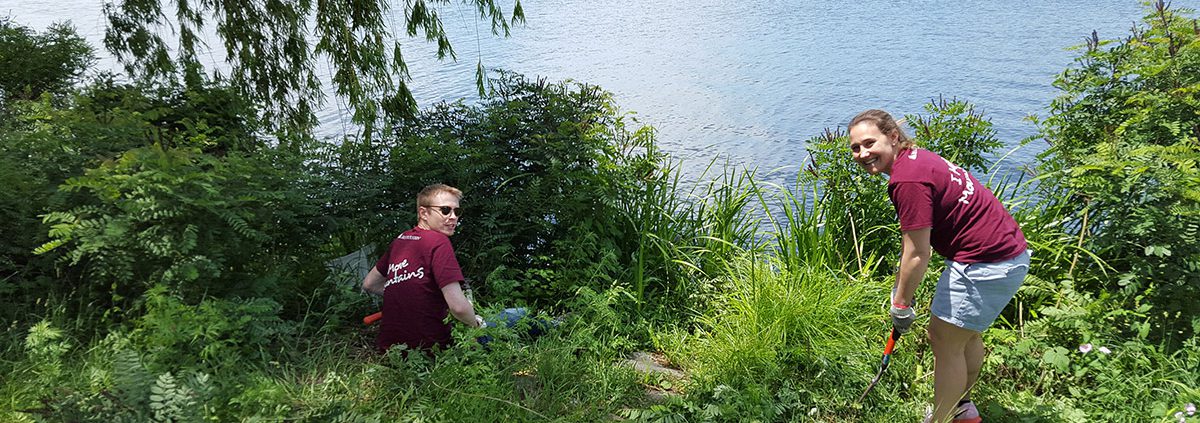Don’t Feed the Reed | January 12, 2017
By Micah Jasny, EA Stewardship Manager
If you have walked through the Esplanade recently, you may have noticed patches of densely growing reeds hugging the waterline. While they may be nice to look at, these reeds are actually the invasive species Phragmites australis, and they pose a serious threat to the Esplanade and the Charles River.
Phragmites, also known as common reed, was common in Europe and was gown to be used as thatching for roofs and food for livestock. In the late 18th or early 19th century, Phragmites made its way across the Atlantic to establish in the United States. Many speculate that the plant was transported here accidentally through ship ballast (the water taken on by ships so that they lay lower in the water). Once the invasive Phragmites established itself, it then quickly dispersed across the U.S. through the 20th century.
Phragmites is a perennial grass that can grow up to 18 feet high and is often found in dense colonies along shorelines. In a single growing season, Phragmites roots can spread up to 10 feet or more and grow several feet deep. Not only do they grow fast, but Phragmites are also prodigious produces, with each plant releasing thousands of seeds each year. Phragmites can also spread by root fragments that break off from the original colony and begin growing elsewhere.
With this in mind, it is not surprising that Phragmites can have some seriously negative impacts on the Esplanade ecosystem. Once introduced, Phragmites spreads quickly and outcompetes native species, forcing them out of the Esplanade. Phragmites also provides little food or shelter for the Esplanade’s wildlife. Finally, when Phragmites does die-off, the reeds dry out and become brittle which can become a serious fire hazard. Not to mention, dense colonies will block Esplanade goer’s view of the Charles!
So how can we manage this threat to the Esplanade? A variety of techniques have been used to try and control Phragmites. One method is manual removal where we cut the reeds down to the root. However, this method usually just slows the spread of Phragmites and doesn’t actually stop them. Herbicide treatment has proven to be a more successful control method for Phragmites and is often sprayed, painted, or wiped over the stems and leaves of the plants. Finally, in areas where Phragmites are dominating the area and have already forced native species out, controlled burning has been used to manage the invasive population. To truly control the Phragmites population, it is best to use a combination of treatment methods over a number of years to ensure that the invasive will not grow back. We at the Esplanade are working to protect the Esplanade and its native species from the threat of Phragmites and will be employing a variety of techniques while minimizing harm to the surrounding environment.





